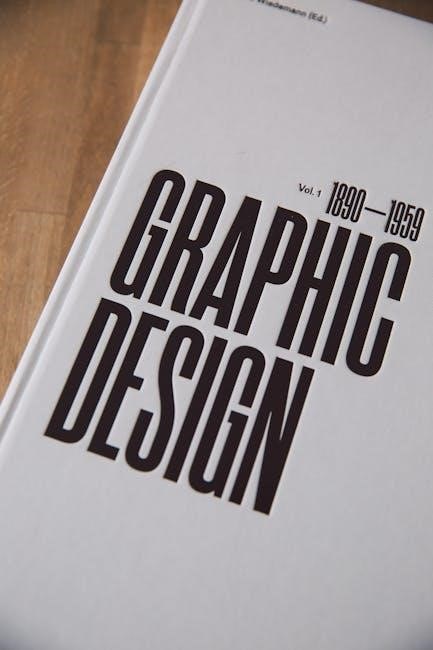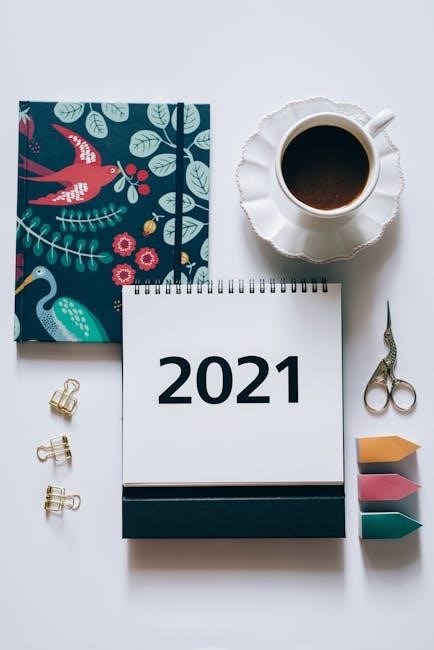
reading comprehension year 6 pdf
Year 6 reading comprehension focuses on refining students’ ability to interpret and analyze complex texts. It prepares them for SATs with engaging PDF worksheets.
Overview of Reading Comprehension in Year 6
Year 6 reading comprehension involves interpreting and analyzing a variety of texts, including fiction, non-fiction, and poetry. Students engage with complex passages to extract meaning, identify themes, and support answers with evidence. Resources like PDF worksheets and past papers are widely used to prepare for SATs, ensuring pupils are familiar with test formats. These materials often include answer booklets and mark schemes for accurate assessment. The curriculum focuses on developing critical thinking and vocabulary skills, aligning with Lexile levels appropriate for Year 6 readers. Regular practice with comprehension activities helps build confidence and fluency, essential for success in exams and lifelong learning.
Importance of Reading Comprehension Skills
Reading comprehension skills are essential for Year 6 students as they transition to more complex texts and prepare for secondary education. These skills enable students to understand, interpret, and analyze information from various sources, fostering critical thinking and vocabulary expansion. Proficiency in reading comprehension enhances academic performance across subjects, as it improves the ability to extract meaning and apply knowledge. Additionally, it builds confidence in tackling challenging texts and supports lifelong learning; For Year 6 students, mastering these skills is vital for success in SATs and beyond, ensuring they can engage effectively with diverse materials and ideas.

Key Concepts in Year 6 Reading Comprehension
Key concepts include understanding fiction, non-fiction, and poetry, developing vocabulary, and applying critical thinking to interpret complex texts effectively.
What is Reading Comprehension?
Reading comprehension is the ability to understand, interpret, and critically engage with written texts. It involves skills such as summarizing, predicting, and making inferences. Effective comprehension requires vocabulary knowledge, fluency, and the ability to identify main ideas and supporting details. For Year 6 students, reading comprehension is a key component of their English curriculum, preparing them for SATs. Through practice with PDF worksheets and passages, students refine their skills, ensuring they can analyze fiction, non-fiction, and poetry. This foundational skill enhances their ability to extract meaning from complex texts, fostering a deeper understanding of language and literature. Regular practice with comprehension exercises helps students build confidence and accuracy in their reading abilities.
Key Skills Required for Reading Comprehension
Reading comprehension requires a combination of skills, including vocabulary knowledge, fluency, and the ability to identify main ideas. Students must learn to summarize texts, make predictions, and draw inferences. Understanding context clues is crucial for interpreting unfamiliar words. Additionally, recognizing the author’s purpose and tone enhances comprehension. For Year 6, identifying cause-and-effect relationships and comparing perspectives are key. These skills help students engage deeply with texts, whether fiction, non-fiction, or poetry. Regular practice with PDF worksheets and passages refines these abilities, preparing students for SATs. Mastery of these skills ensures students can independently analyze and interpret complex texts with confidence and accuracy.
Lexile Levels for Year 6 Readers
Lexile levels for Year 6 readers typically range between 890L and 980L, ensuring texts are appropriately challenging. These levels align with the complexity of passages found in SATs materials. A Lexile measure of 890L to 980L indicates that students can handle a variety of texts, including classic fiction, non-fiction, and poetry. This range reflects the expected reading proficiency for 10-11 year olds, preparing them for upper-level comprehension tasks. PDF resources often use these levels to match texts to students’ reading abilities, ensuring they are neither too easy nor overly difficult. This tailored approach helps students progress steadily in their reading comprehension skills.

Types of Texts in Year 6 Reading Comprehension
Year 6 reading comprehension includes fiction, non-fiction, and poetry. These texts cover a range of topics, from classic stories to informative articles and lyrical verses, preparing students for SATs.
Fiction Texts
Fiction texts in Year 6 reading comprehension include engaging stories that spark imagination and critical thinking. These narratives often feature characters, settings, and plotlines designed to challenge students’ understanding. Examples include classic tales like The Wolves of Willoughby Chase and modern stories such as Grandpa’s Perfect Gift. These texts are carefully selected to align with SATs preparation, ensuring students can interpret themes, motivations, and moral lessons. Fiction texts also encourage students to make inferences, predict outcomes, and analyze language use. They play a key role in developing deeper comprehension skills and fostering a lifelong love for reading.
Non-Fiction Texts
Non-fiction texts in Year 6 reading comprehension are designed to enhance students’ ability to process factual information. These texts cover a wide range of topics, from historical events like The History of the Olympics to factual accounts such as Fearless Stunt People!. They often include non-chronological reports, biographies, and informative articles. Non-fiction texts require students to identify key details, understand cause-and-effect relationships, and make informed opinions. These materials are structured to mirror SATs-style questions, helping students become adept at extracting relevant information and answering questions accurately. Non-fiction texts also build real-world knowledge and improve critical thinking skills essential for academic success.
Poetry and Other Literary Forms
Poetry and other literary forms play a vital role in Year 6 reading comprehension, introducing students to diverse styles and techniques. Texts like Conquer by Joseph Coelho and Sun is Laughing by Grace Nichols are often used to explore themes, imagery, and figurative language. These poems, along with other literary works, encourage students to interpret complex ideas and make inferences. Activities are designed to enhance understanding of poetic devices, such as metaphor, simile, and personification. Resources like PDF worksheets and practice booklets provide exercises tailored to these texts, helping students develop analytical skills. Poetry also fosters creativity and critical thinking, preparing students for the challenges of literary analysis in exams.
Resources for Year 6 Reading Comprehension
Year 6 reading comprehension resources include PDF worksheets, past papers, and interactive activities designed to boost reading skills and prepare students for exams effectively.
Year 6 Reading Comprehension PDF Worksheets
Year 6 reading comprehension PDF worksheets are designed to enhance critical thinking and reading skills. These resources include engaging passages followed by questions that assess comprehension abilities. Each worksheet is tailored to cover various text types, such as fiction, non-fiction, and poetry, ensuring a well-rounded learning experience. They are available for download and are ideal for both classroom use and home study. The PDF format makes them easily accessible and printable, providing students with ample practice opportunities to excel in their reading comprehension skills. These worksheets are a valuable tool for teachers and parents aiming to support Year 6 students in their academic journey.
Past Papers and Practice Booklets
Past papers and practice booklets are essential resources for Year 6 students preparing for reading comprehension assessments. These materials provide authentic practice, mirroring the format of real SATs tests. They include a variety of fiction, non-fiction, and poetry texts, along with corresponding questions that challenge students to demonstrate their understanding. Practice booklets often feature mark schemes, enabling pupils and teachers to assess progress effectively. By working through past papers, students become familiar with test conditions, improving their ability to manage time and tackle complex texts confidently. These resources are invaluable for revision, helping students refine their comprehension skills and prepare thoroughly for exams.

Interactive Reading Activities
Interactive reading activities are dynamic tools designed to engage Year 6 students in their comprehension journey. These activities include online games, quizzes, and multimedia resources that bring texts to life. For instance, comprehension tasks linked to real-world topics like sports events or historical figures captivate students’ interest. Many activities are structured around VIPERS skills, encouraging pupils to explore texts deeply. Resources like comprehension ninja challenges and differentiated reading tasks cater to varied learning needs. These interactive methods not only enhance understanding but also foster a love for reading. By integrating technology and creative approaches, they make learning fun and effective.

Tips for Improving Reading Comprehension
Develop VIPERS skills, engage in interactive activities, and practice regularly. Use active reading strategies like highlighting and note-taking to enhance understanding and retention of complex texts effectively.
Strategies for Understanding Complex Texts
To tackle complex texts, students can use pre-reading techniques, such as identifying purposes and making predictions. Summarizing paragraphs and identifying key themes helps deepen understanding. Active reading strategies like highlighting and annotating texts are effective. Encouraging students to ask questions while reading and visualize content enhances comprehension. Teaching VIPERS skills—Vocabulary, Inference, Prediction, Explanation, Retrieval, and Summarization—equips students with tools to decode challenging passages. Utilizing graphic organizers or concept maps can also clarify relationships between ideas. Regular practice with diverse texts, including fiction and non-fiction, builds confidence and fluency. Accessing resources like FictionGeorgeandtheDragon.pdf and BrazilFactFile.pdf provides targeted support for mastering complex texts.
Techniques for Answering Comprehension Questions
Mastering techniques for answering comprehension questions is crucial for Year 6 students. Start by carefully reading the question and identifying key words. Skim the text to locate relevant sections, then read thoroughly to gather evidence. Underline or highlight important details to reference later. Practice answering different question types, such as True or False, multiple-choice, and open-ended questions. Use VIPERS skills to guide responses: Vocabulary, Inference, Prediction, Explanation, Retrieval, and Summarization. Encourage students to justify answers with textual evidence. Regular practice with resources like FictionGeorgeandtheDragon.pdf and BrazilFactFile.pdf helps build confidence and accuracy in responding to comprehension questions effectively.
Year 6 reading comprehension is a vital skill that bridges primary education and future academic success. By utilizing resources like PDF worksheets, past papers, and interactive activities, students can enhance their ability to interpret and analyze various texts. Regular practice with materials such as FictionGeorgeandtheDragon.pdf and BrazilFactFile.pdf helps build confidence and fluency. Emphasizing VIPERS skills and tailored strategies ensures students are well-prepared for assessments like SATs. Encouraging a love for reading through engaging texts and activities fosters lifelong learning. With consistent effort and the right tools, Year 6 students can achieve proficiency in reading comprehension, setting a strong foundation for their educational journey ahead.